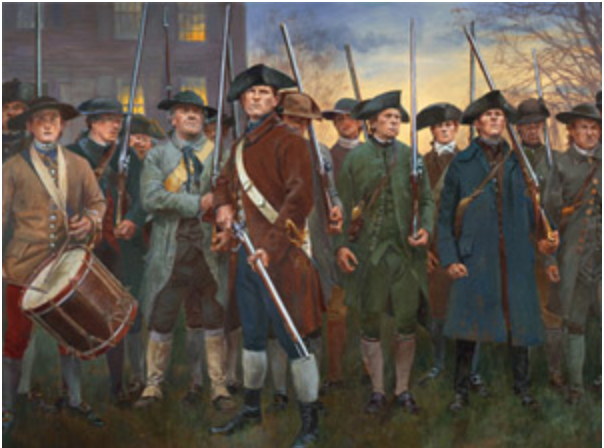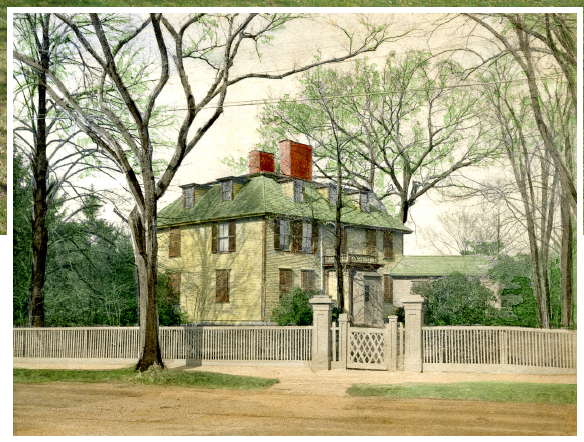“Noise! You’ll have noise enough before long! The regulars are coming out!”
250th Anniversary – On April 19, 1775, the first armed conflict of the American Revolutionary War occurred on the village green in Lexington, Massachusetts. Alerted by riders Paul Revere, William Dawes, and Samuel Prescott local militia assembled on the Lexington Green to resist the British forces. At dawn, seventy-seven militia members, led by Captain John Parker, faced roughly 800 British soldiers on Lexington Green. Amidst the standoff, a shot was fired, its origin remains unknown, which triggered the British troops to open fire, resulting in the deaths of eight colonists and wounding several others.
Two of my 5th g-grandfathers (paternal), Joseph Simonds and Joel Viles, where two of the seventy-seven men of Captain Parker’s Company of Lexington Militia who engaged the British and were part of the “shot heard round the world.”
Joshua Simonds – When the British came up in front of the meeting-house, Joshua Simonds was in the upper gallery, an open cask of powder standing near him, and he afterward told me, that he cocked his gun and placed the muzzle of it close to the cask of powder, and determined to “touch it off,” in case the troops had come into the gallery. (Ebenezer Munroe – Boston 1775 Blog)

“Accumulation of all powers…in the same hands…may justly be pronounced the very definition of tyranny.” James Madison
“In absolute governments the King is law, so in free countries the law ought to be king.” Thomas Paine
References:
“Noise! You’ll have noise enough before long! The regulars are coming out!” The Midnight Ride of Paul Revere and Some Other Guys
Lexington Green 19th of April 1775 – Painting by Don Troiani, a skilled American academic realist painter, known for his Civil War and American Revolution paintings. I am grateful for his permission to use his amazing painting as the header for my family genealogical blog.
Copyright © 2025. All Rights Reserved by David R. French

 The Buckman Tavern is most renowned for its role in the events of April 19, 1775. However, the site is important in other ways. It has been a notable presence in Lexington since it became a tavern in 1713, shortly after it was built. As a “Public House of Entertainment,” the Tavern was faithfully tended by
The Buckman Tavern is most renowned for its role in the events of April 19, 1775. However, the site is important in other ways. It has been a notable presence in Lexington since it became a tavern in 1713, shortly after it was built. As a “Public House of Entertainment,” the Tavern was faithfully tended by